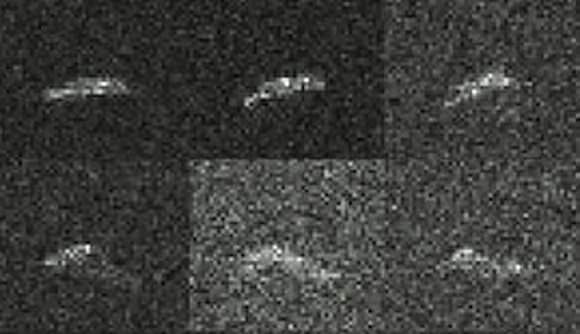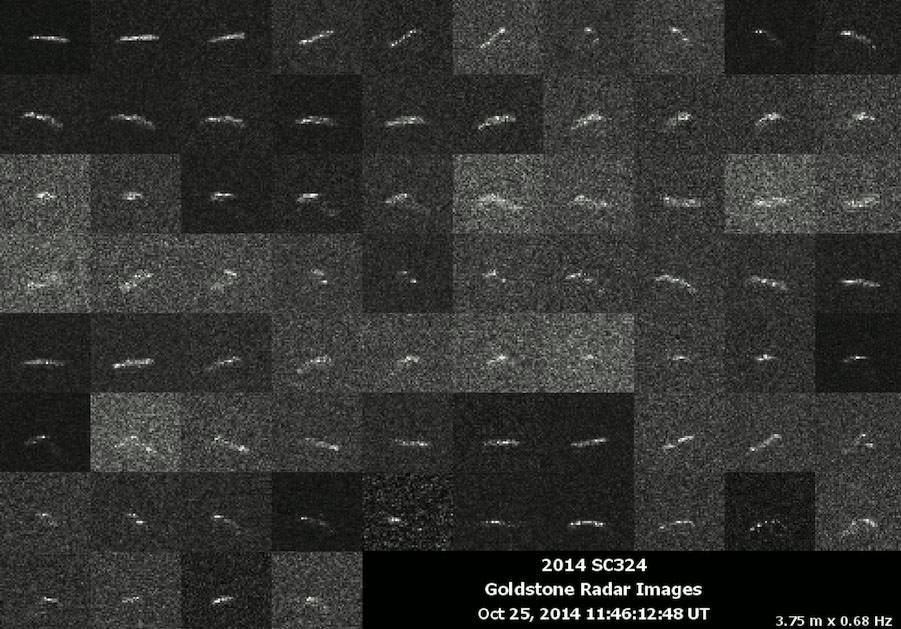Looks like we dodged a bullet. A bullet-shaped asteroid that is. The 70-meter Goldstone radar dish, part of NASA’s Deep Space Network, grabbed a collage of photos of Earth-approaching asteroid 2014 SC324 during its close flyby last Friday October 24. These are the first-ever photos of the space rock which was discovered September 30 this year by the Mt. Lemmon Survey. The level of detail is amazing considering that the object is only about 197 feet (60-meters) across. You can also see how incredibly fast it’s rotating – about 30-45 minutes for a one spin.

In the cropped version, the shape is somewhat clearer with the asteroid appearing some four times longer than wide. 2014 SC324 belongs to the Apollo asteroid class, named for 1862 Apollo discovered in 1932 by German astronomer Karl Reinmuth. Apollo asteroids follow orbits that occasionally cross that of Earth’s, making them a potential threat to our planet. The famed February 15, 2013 Chelyabinsk fireball, with an approximate pre-atmospheric entry size of 59 feet (18-m), belonged to the Apollo class.

Lance Benner and colleagues at Goldstone also imaged another Apollo asteroid that passed through our neighborhood on October 19 called 2014 SM143. This larger object, estimated at around 650 feet (200-m) across, was discovered with the Pan-STARRS 1 telescope on Mt. Haleakala in Hawaii on September 17. Tell me we’re not some shiny ball on a solar system-sized pool table where the players fortunately miss their shot … most of the time.

